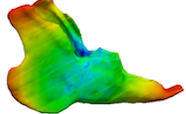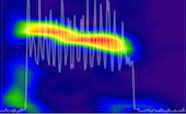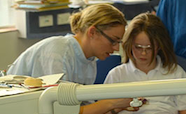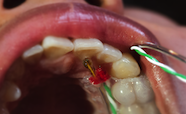Programme director
Programme staff
Key research staff, postgraduate students and collaborations
Programme overview
The Craniofacial Research programme encompasses a diverse range of exciting fields, including the basic and molecular sciences relevant to craniofacial growth, the impact of malocclusions on oral health, jaw function, self-esteem, psychological wellbeing, and the understanding of the peripheral and central mechanisms of orofacial pain and jaw dysfunction with their clinical correlates.
Our aims are to investigate aspects of dentofacial growth and jaw function, from the molecular mechanisms to population studies, and then translate that new knowledge to the clinical management of individual patients.
Craniofacial anomalies and dental malocclusions

Three-dimensional image of mandibular growth in a rabbit.
Research in this field of Craniofacial Biology encompasses:
- Basic and molecular sciences relevant to normal and abnormal craniofacial growth and bone remodeling
- Genetics and environmental causes of dentofacial anomalies
- Mechanobiology of tooth movements
- Impact of dentofacial anomalies on oral function and psychological wellbeing
- Development and testing of novel treatment strategies for clinical problems such as craniofacial syndromes, jaw discrepancies, and misaligned teeth
- Anatomical and molecular imaging methods to investigate craniofacial growth
Masticatory disorders, jaw dysfunction, and orofacial pain

EMG (Electromyogram) of bruxism episode in the time-frequency domain.
Research in this field of Clinical Oral Physiology has a focus on:
- Normal and abnormal chewing and swallowing patterns e.g. dysphagia
- Peripheral and central mechanisms of orofacial pain with their clinical correlates
- Bruxism and non-functional oral habits
- Diagnosis and management of sleep disordered breathing, such as snoring and sleep apnea
- Assessment of intra-oral tongue and lip pressures ad their relationship with malocclusions
- Eating behavior and novel food products
Patient-centered treatments and personalised care

Patient perception of orthodontic problems can impact on body image.
We use several research approaches to study topics relevant to our research programme. These include cell response to mechanical loading, animal models, and clinical genetics.
Clinical genetics focuses on identifying genetic markers for some dentofacial anomalies. This could potentially provide us with a clinically important window of opportunity to predict abnormal growth patterns at an early age and, possibly provide personalised orthodontic treatments. Furthermore, the impacts of craniofacial anomalies and smile problems are quantitatively and qualitatively assessed at population and individual level using survey methods including social media. Social media enables us to gather opinions from the public about the importance of smiles for individuals themselves and also the perspective of their peers.
Translational research in oral physiology

Portable equipment has revolutionised monitoring and analysis.
Research in the field of clinical oral physiology examines mastication and jaw kinematics, using both laboratory and portable equipment.
Oral behaviors are tracked directly in natural environments using smart digital assistants. We are currently using wired and wireless sensors to monitor intraoral pH and jaw activities for the purpose of identifying and evaluating ways of overcoming orofacial pain, jaw dysfunction, jaw clicking sounds, and dental wear.
We also use monitoring equipment to improve the quality of sleep in New Zealand children and adults.
Current research projects
More information on our current research projects can be found in our Craniofacial Research programme profile (linked at right) along with key personnel, project funding and recent publications.
 Smart-phone assisted EMG device developed at Otago for continuous monitoring of jaw muscle contractions. The device provides a comprehensive analytical tool to estimate when, how often, how long, and how strongly the jaw muscles contract.
Smart-phone assisted EMG device developed at Otago for continuous monitoring of jaw muscle contractions. The device provides a comprehensive analytical tool to estimate when, how often, how long, and how strongly the jaw muscles contract.
More information
Craniofacial Research programme profile
(PDF extract from our 2019-2020 SJWRI Research Report)
Key research staff, postgraduate students and collaborations